Golf is a game of accuracy, patience, and yes, rules. Many rules. One area that often causes confusion among players is the topic of marking golf balls in ways that are not allowed. Whether you are an experienced player or someone who just plays on weekends, understanding what is allowed and what is not when it comes to marking your golf ball can save you from unnecessary penalties and keep your game strong. So, let’s dive into the world of golf ball markings, explore why players mark their balls, and clarify what the rules say about it.
Reasons to Mark Your Golf Ball

Before we get into the nitty-gritty of illegal golf ball markings, let’s talk about why golfers mark their balls in the first place. Marking your golf ball isn’t just about personalization (though who doesn’t love a ball with their initials on it?). It’s also about practicality. On the course, it’s easy to lose track of your ball, especially when everyone is using the same brand and model. A unique mark helps you identify your ball quickly and avoid playing the wrong one—a mistake that could cost you strokes or even disqualification in a tournament.
Marking your ball can also help with alignment. Many players use markings to line up their putts or drives, ensuring they’re aiming exactly where they want to go. But here’s where things get tricky: not all markings are created equal, and some can cross the line into illegal golf ball markings territory.
Looking to Improve Your Overall Golf Game?

Are the basics of your golf game—like your swing path, clubface angle, and body position—lined up correctly? Discover the answer with Gears. We offer the most advanced and accurate golf swing motion capture system globally, and our users are constantly amazed by how clear and useful our insights are. With our system, you can compare your movements to those of a professional golfer and even see a detailed 3D view of every angle and speed of your body motion. This helps you pinpoint exactly where you need to improve. Loved by pro golfers and coaches everywhere, Gears Golf is sure to impress. Visit us to discover more!
What Do the Rules Say About Ball Marking?

The Rules of Golf, as governed by the USGA and R&A, are pretty clear when it comes to ball markings. According to Rule 6.3a, you’re allowed to mark your ball for identification purposes. This means you can add dots, lines, initials, or even small logos to your ball. However, the rules also state that these markings cannot be used to “unduly influence the movement of the ball” or give you an unfair advantage.
So, what counts as an unfair advantage? That’s where things get a bit murky. For example, using a marking to help align your putt is generally fine, but if that marking is deemed to be excessively large or distracting, it could be considered an illegal golf ball marking. The key is to keep your markings subtle and within the spirit of the game.
Alignment Marking On Golf Balls
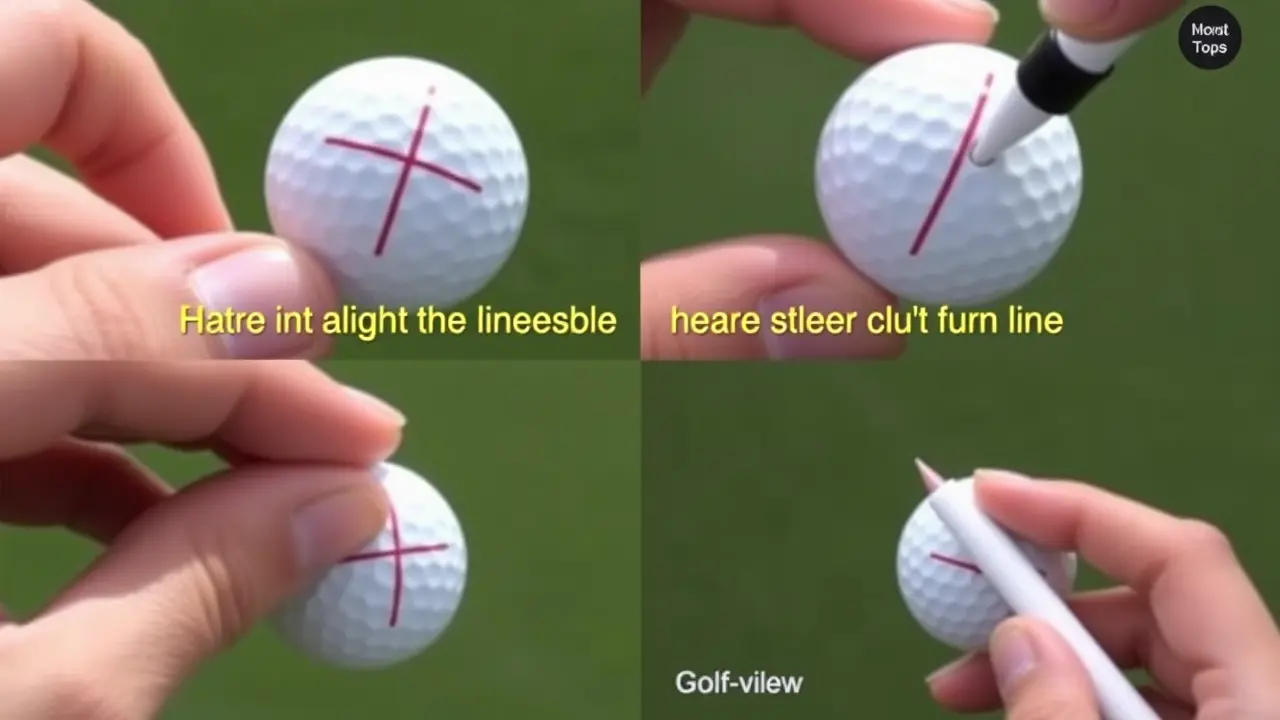
Alignment markings are one of the most common types of ball markings, and they’re also one of the most debated. Many golfers use a single line or multiple lines to help them align their putts or drives. This practice is perfectly legal, as long as the markings don’t violate the rules mentioned earlier.
However, some players take alignment markings to the extreme, covering their entire ball with lines, arrows, or other designs. While this might seem like a good idea in theory. It can easily cross the line into illegal golf ball markings. The USGA has specific guidelines on the size and placement of alignment markings, so it’s important to stay within those limits.
Marking Your Spot
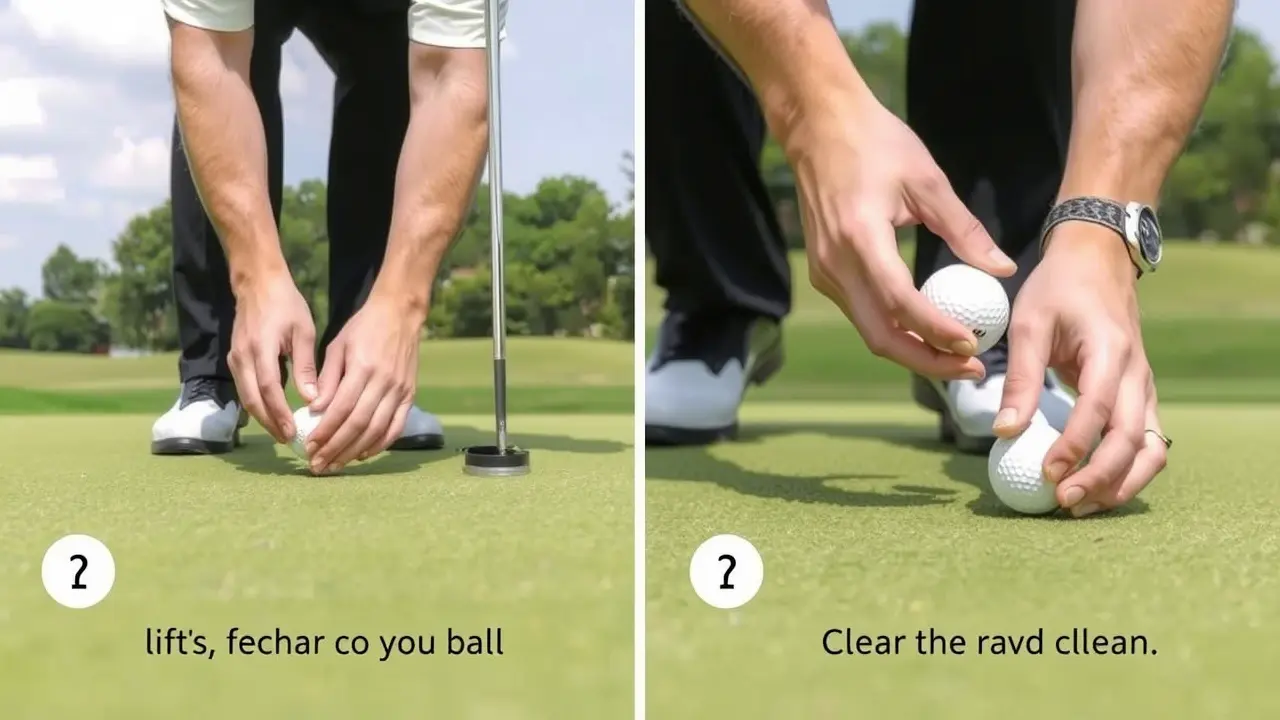
Ever wondered how to mark your ball’s spot on the putting green or elsewhere? It’s not just about courtesy to other players—it’s also a rule! According to the Rules of Golf, you can only use artificial objects to mark your ball’s position. Think simple: a coin, a gum wrapper, or even the tab from a soda can works perfectly. But beware—using natural items like a twig will cost you a one-stroke penalty. (Trust me, arguing over whether you were at the twig or not isn’t a fun debate!) A tee is also a safe bet.
Here’s the kicker: if you skip using a marker and try to rely on a random mark or blemish on the green as your reference point, you’ll get slapped with a one-stroke penalty. So, always mark your spot—it’s a small step that keeps you penalty-free and playing fair!
Ball Marking Etiquette: A Quick Guide
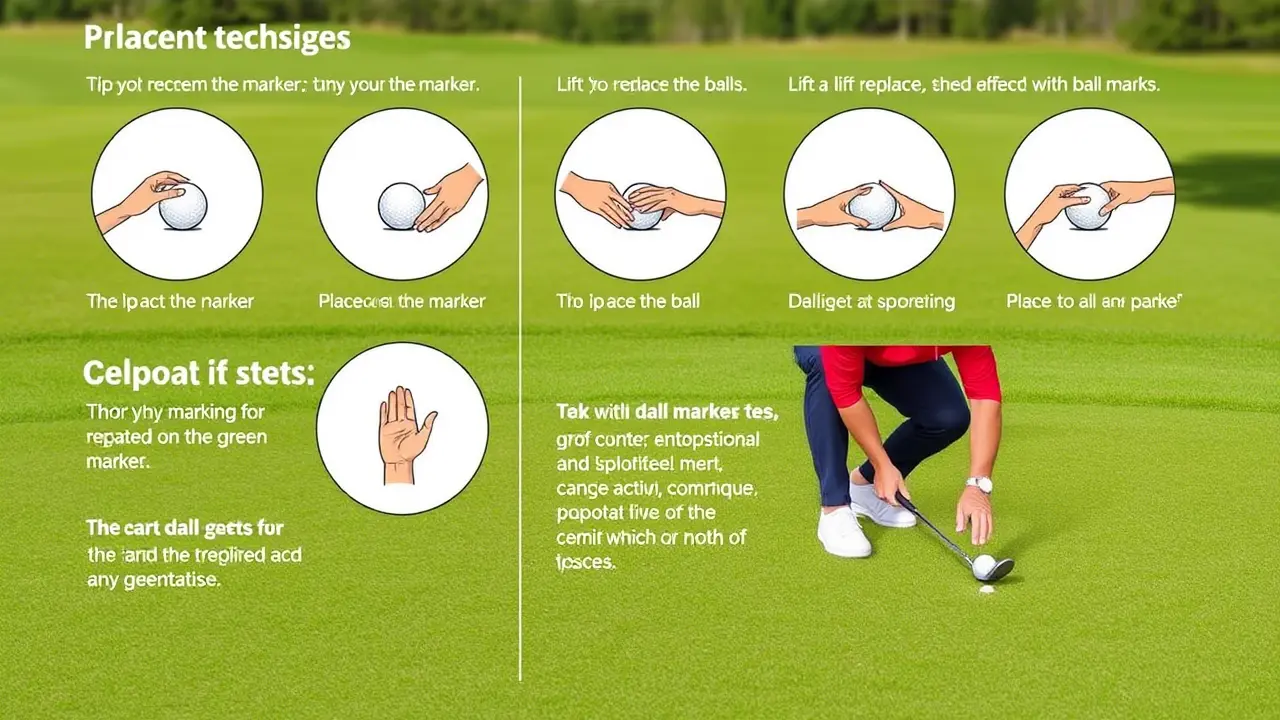
Context matters, especially in golf. When you’re playing casually with friends, using alignment markings on your ball or even a soda can tab as a marker on the green is fine—just make sure to place it directly behind the ball. Putting it anywhere else, like in front, might annoy more serious players who worry about altering the green. Plus, marking the ball more than an inch behind it can cost you a penalty stroke.
In tournaments, though, forget the DIY markers. Most events provide proper ball markers, so you won’t have to worry. But be careful—if your ball is covered in alignment aids, other players might call you out. And if you’re playing as a guest at a formal event or someone else’s club, follow their rules closely. Tuck in your shirt, wear a proper hat, and use a classy marker like a coin instead of a tee. Stay respectful and avoid causing any fuss—it’s all about good etiquette!
Is It Ok to Move a Marker On Golf Ball?
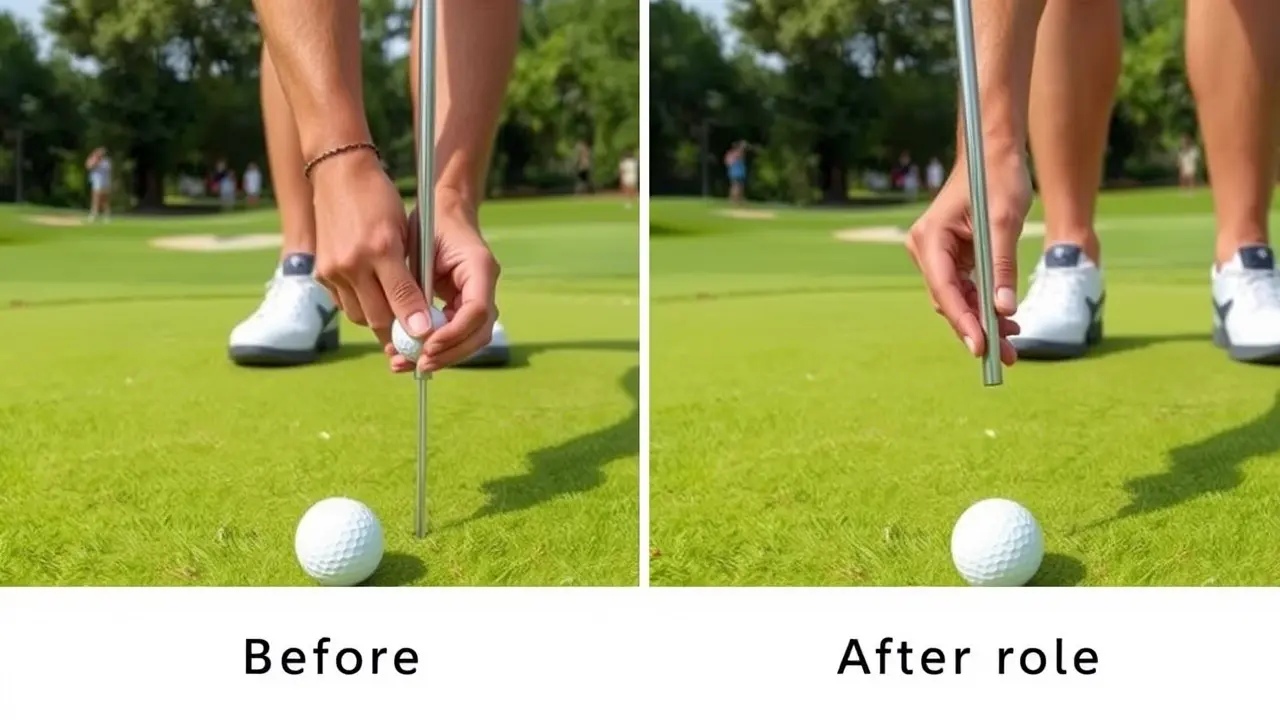
This is a question that comes up a lot, especially in casual games. The short answer is yes, but only under specific circumstances. If your marker is in the way of another player’s putt, you can move it one or two clubhead lengths to the side. However, you must remember to move it back before you putt. Failing to do so could result in a penalty.
Will Marking My Ball or Ball Position Get Me a Penalty?
Marking your ball and ball position on the course is pretty straightforward. There are, however, a few things to watch out for.
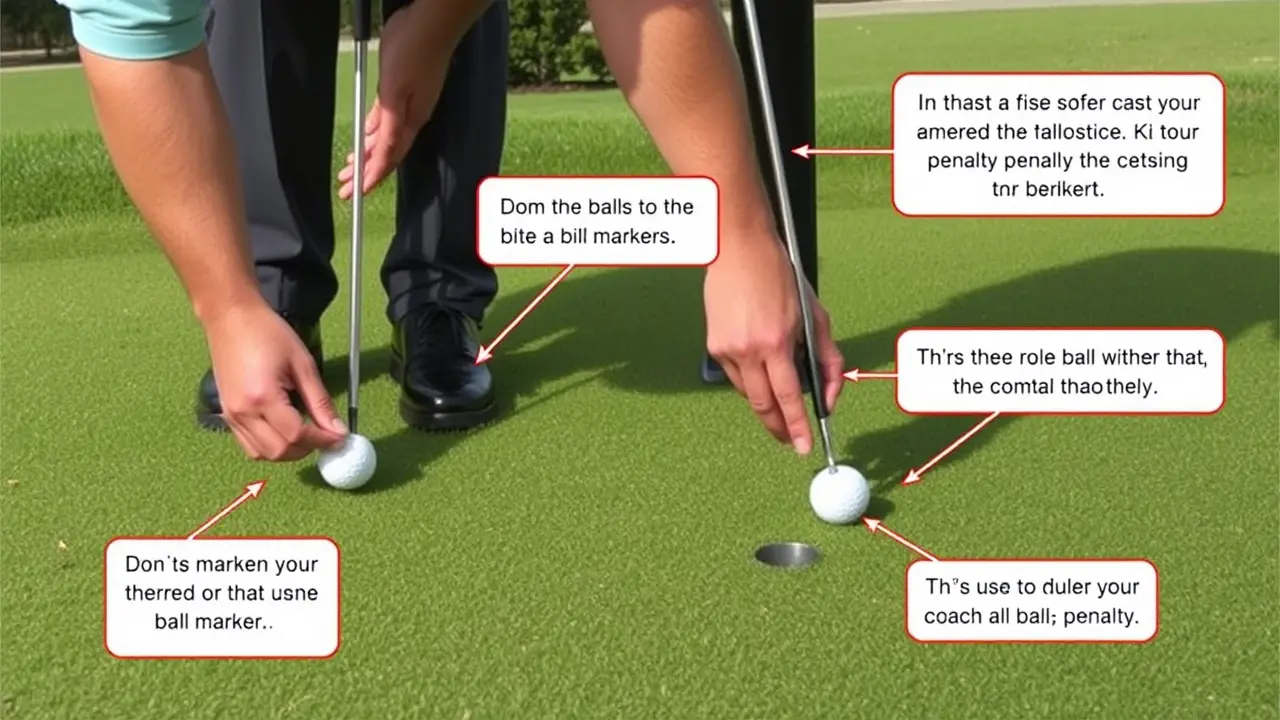
While marking your ball is generally allowed, there are some situations where it could lead to a penalty. For example, if you mark your ball in a way that’s deemed to be an illegal golf ball marking, you could be penalized under Rule 4.2a. This rule prohibits any markings that are designed to influence the ball’s movement or give you an unfair advantage.
Another potential pitfall is marking your ball incorrectly on the green. If you don’t replace your ball or marker correctly, you could face a one-stroke penalty under Rule 14.7a.
Moving your marker incorrectly and failing to move it back can also result in a one-stroke penalty.
Ball Marking is Allowed, But Stay Within the Rules
At the end of the day, marking your golf ball is a perfectly legal and practical part of the game. Whether you’re using a simple dot or an elaborate alignment line, the key is to stay within the rules and avoid anything that could be considered an illegal golf ball marking. By doing so, you’ll not only keep your game above board but also show respect for the traditions and integrity of golf.
So, the next time you’re out on the course, go ahead and mark your ball—just make sure you’re doing it the right way. After all, golf is a game of honor, and there’s no better way to honor the game than by playing it fairly.


